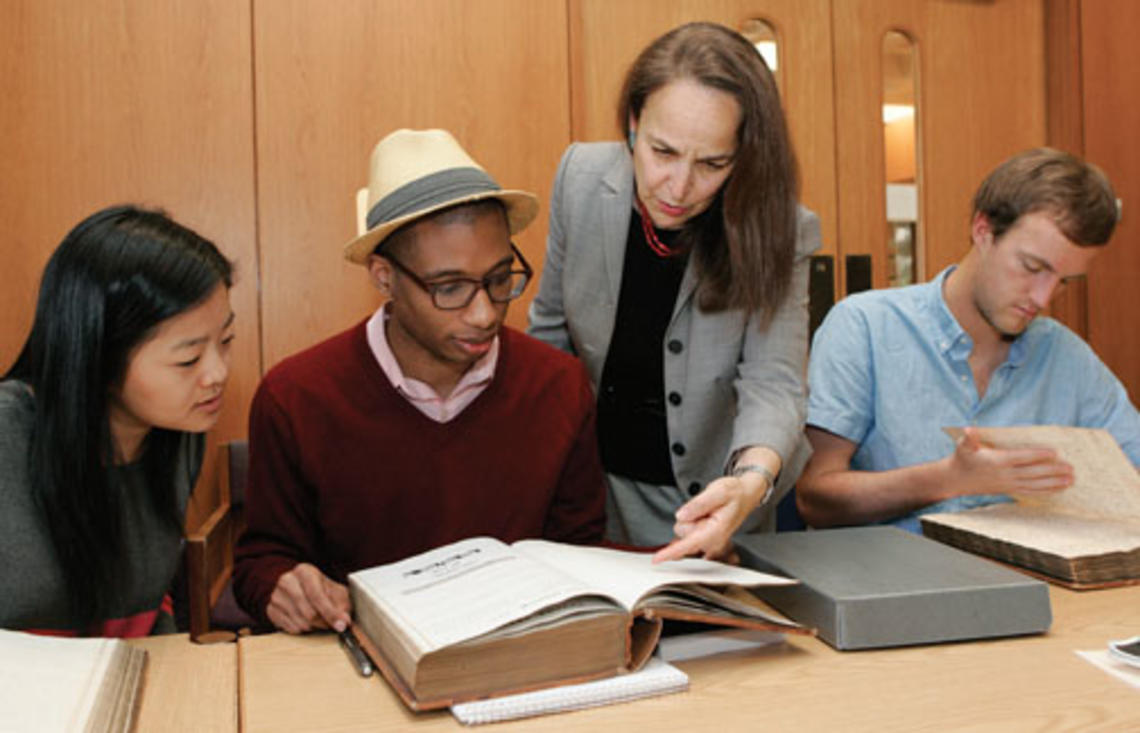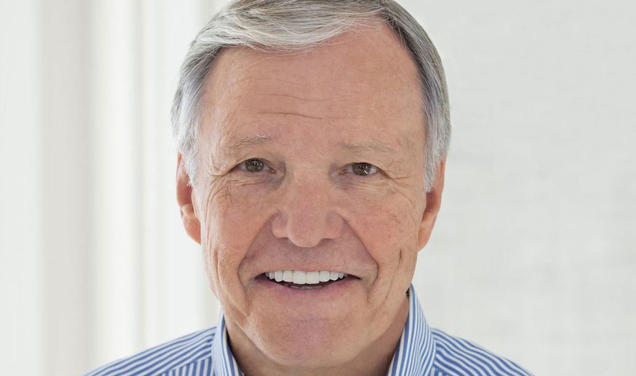
Madison Bush ’14 and Savannah Strong ’15 bent over the scrap of yellowing parchment, puzzling out the details of a long-forgotten court case recorded in cramped 18th-century handwriting.
“This line right here,” Strong said. “It looks like ‘joint’ ...”
“... ‘possession,’ ” Bush read out. “Joint possession.”
A few minutes later, Strong was explaining the context of the case: “This woman, Sally, is in the joint possession of ... ”
Dusty documents, unreadable handwriting, historical atrocity: just another day in the archives for students enrolled in this spring’s research seminar “Princeton and Slavery,” which is investigating the University’s largely unexamined social, financial, and ideological ties to America’s original sin.
“When I came here, I was curious about the Princeton story, and no one really seemed to know the answer,” said Professor Martha Sandweiss, the seminar’s leader, who joined the history department in 2009. “It struck me as odd that Princeton, as the most Southern of the Ivies, hadn’t undertaken an exploration like this in the past.”
In recent years, a number of colleges — most prominently Brown University, which is named for a benefactor whose family made money in the slave trade — have probed their historical links to slavery. Sandweiss’ seminar marks the beginning of what eventually may become a similar report on Princeton’s history.
The project is too large to complete in a single semester — Sandweiss plans to teach the course again in the fall — so for now, it remains a work in progress, an effort by six undergraduates to dig out individual stories that, pieced together, eventually will make up a larger mosaic.
Drawing on myriad sources — census data, taxation rolls, genealogy records, letters, journals, University minutes — Sandweiss’ students have researched the backgrounds of their predecessors in some of Princeton’s pre-Civil War classes, to determine how many came from slaveholding families or owned slaves themselves.
The students have found citizens of New Jersey who spent their lives contentedly owning other human beings, and a Mississippian who freed his slaves and became an abolitionist. They have read about the entanglement of Northern industry with Southern slavery, complicating the simplistic picture often taught in school. “It was an American problem, not a Southern problem,” said Micheal Gunter ’14.
A passing reference in an assigned text made Thatcher Foster ’14 realize for the first time that a famous ancestor — President James Knox Polk, from whose brother Foster’s paternal grandmother descends — was a slaveholder. “I’m a liberal kid from New Jersey,” said Foster, whose father, Hal Foster ’77, teaches in Princeton’s art and archaeology department. “I don’t really know how to feel about it.”
Strong’s research focuses on the Southern students who left Princeton to fight in the Civil War. “When all the Southern students left Princeton’s campus and got on the train to return to the South, all of the other students on campus followed them and gave them this huge goodbye,” said Strong. “It’s just so interesting to think about what it would have been like to be roommates with someone and go, ‘All right — see you across the stone wall.’ ”
At least in these early stages, the students’ research paints a picture of a Princeton both intimately involved with slavery and curiously detached from it. A 2008 senior thesis, which Sandweiss assigned as a classroom text and considers well-documented, argues that Princeton’s first eight presidents were slaveholders; one of them, John Witherspoon, shored up the University’s post-Revolutionary War finances with money from slave interests.
Yet on campus in the years before the Civil War, the subject apparently was debated infrequently. “I think it was kept hush-hush on purpose, just because of the fact that there were so many Southerners and so much of the money and the resources were coming from the South,” said Janie Lee ’15. “I would have expected more controversy. I think almost everyone took courses in philosophy, so you have these ideas about morality and justice being taught and argued.”
In the course of their work, the students have learned firsthand about the satisfactions and frustrations of original archival research. “It’s not straightforward,” Sandweiss said. “It’s not like you can check 12 books out of the library and write your research paper.” Bush scrolled through yards of blurry microfilm seeking the will of Samuel Stanhope Smith, Princeton’s seventh president, without success.
Once Princeton’s connections to slavery have been teased out and reported, what should the University do about them? Sandweiss and her students mostly seem content to leave that question to others.
“Apologize to whom? Make reparations to whom? Because you can never repay what slavery has wrought,” said Gunter, who is African-American. “To apologize to me — I guess I’d accept it, but I’d be confused.”
Despite the sadness inherent in thinking carefully about the horrors of slavery, nothing they have learned about Princeton’s past has diminished their affection for the University they know today, the students said.
“This happened in the past,” Bush said. “And I think it’s important for us to know the past, but I think the University has the opportunity every day to change its course for the future.”










2 Responses
Prentis Hall ’79
8 Years AgoJust learned of this research today...
Just learned of this research today. I’m interested in following the progress of the research as it continues. Let’s examine the contributions, both willing and unwilling, that America has made to Princeton. Princeton repays these contributions by serving the nation (and all nations) in return.
Rick Williamson ’94
8 Years AgoExploring Ties to Slavery
It touched me to read the May 15 Campus Notebook article about Professor Martha Sandweiss’ exploration of Princeton’s ties to slavery. I have always believed that this topic has never been adequately addressed.
I’m an African-American ’94 Princeton graduate, and I began my own genealogical research in 1999. I was surprised to learn that my family history intersected with Princeton. The South Carolina slaveholder on whose plantation my enslaved ancestors labored was a graduate of Princeton’s Class of 1856. I don’t know if this slave owner brought along any of his black “servants” during his years at Princeton. But, whether my enslaved ancestors accompanied him to Princeton or not, they certainly would have known of Princeton, given the owner’s notable loyalty to his alma mater.
I’m a person of deep faith and believe that surely my ancestors prayed to God regarding their plight of perpetual servitude. I believe that they desired to someday live free and to see their children freely participating in society’s esteemed institutions — perhaps even one as respected and as lauded as Old Nassau. If my ancestors did offer such prayers, then I believe that God heard them. And even though our slavery persisted for hundreds of years, faith mysteriously imbued such prayers with an unsilenceable voice in the heavens and prompted God’s response.
That I am the recipient of such grace as an answer to my ancestors’ prayers, so that 140 years later, I exited Nassau’s gates as a Princeton graduate — well, this is completely humbling. If I had this knowledge during my days as a student, especially during those periods of loneliness during which I struggled with feelings of whether I belonged at Princeton, I likely would have known that my days at Princeton were indeed “meant to be.”
Believe me when I say that the exploration of Princeton’s connections to slavery is a good thing. Thanks to Dr. Sandweiss for her good work. I wish her continued success.